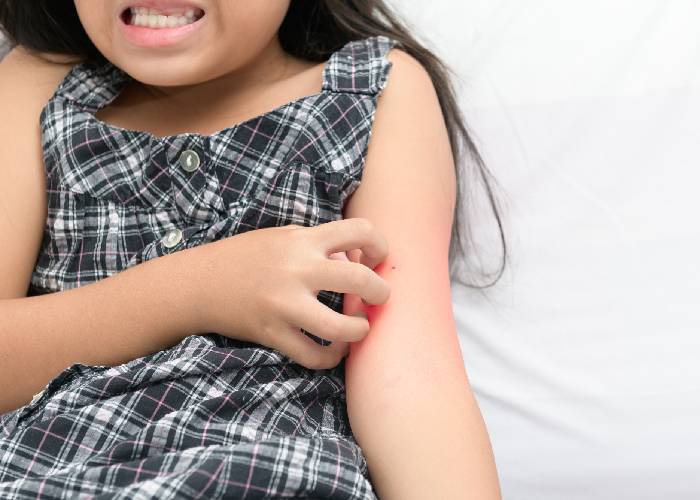
When eczema fails to respond to emollients, topical steroids and avoidance of trigger factors, patients are referred to a specialist, who may recommend immunosuppressant treatment (e.g. ciclosporin, azathioprine or phototherapy similar to that used for psoriasis treatment)
Alternatively, for severe eczema in children over six years, dupilumab injection may be offered (every two weeks). Dupilumab is a monoclonal antibody against interleukin-4 that reduces the levels of inflammatory mediators in the skin.
Another approach that is used for extensive, severe eczema in young children is wet-wrapping.
A generous layer of emollient or mild topical steroid cream is applied to the skin, which is then covered by a wet cotton tubular bandage. This bandage is then over-wrapped with a dry bandage. Apart from the scalp, the bandages can be applied over the whole body and left in place overnight. Close supervision is required when a topical corticosteroid is used, because the occlusion increases the likelihood of absorption and the risk of systemic adverse effects.
Behavioural therapy including hypnotherapy, cognitive behavioural therapy and autogenic training has also been used as an adjunct to conventional treatment in cases of eczema, often with good results.
References
- National Institute for Health and Clinical Excellence (NICE) (2007). Atopic eczema in children: management of atopic eczema in children from birth up to the age of 12 years
- Czarnowicki T et al. Novel concepts of prevention and treatment of atopic dermatitis through barrier and immune manipulations with implications for the atopic march. J Allergy Clin Immunol 2017; 139:1723-34
- Conditions for which over-the-counter items should not routinely be prescribed in primary care: guidance for CCGs
- Williams, Hywel C (2004). Twice-weekly topical corticosteroid therapy may reduce atopic dermatitis relapses. Arch. Dermatol. 140: 1151-1152.
